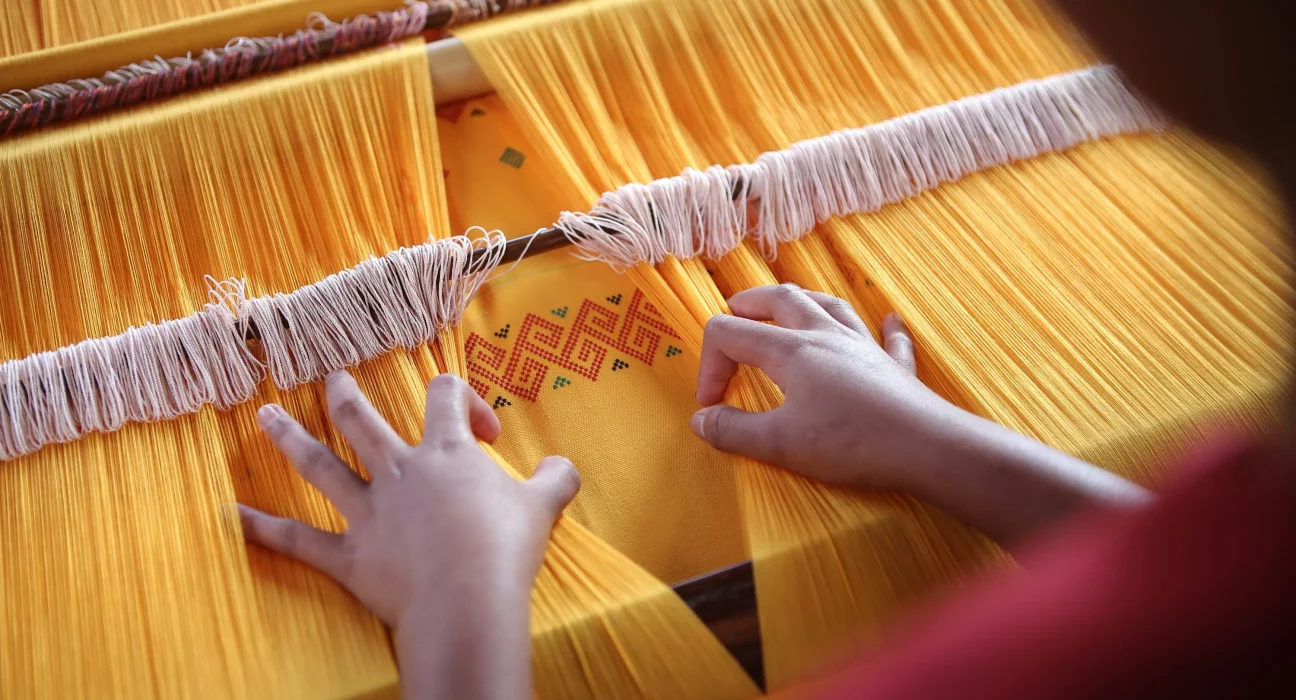The Role of Handloom Textiles in Preserving Indian Heritage

India’s rich textile heritage is one of the oldest and most diverse in the world, with its handloom textiles standing as a testament to centuries of craftsmanship and tradition. Handloom textiles are more than just fabrics; they represent the artistry, culture, and history of different regions across the country. The intricate weaving techniques and the diverse fabrics produced on handlooms reflect India’s cultural diversity and the story of its people. From the famous Kanjeevarams of Tamil Nadu to the delicate Banarasi silks of Uttar Pradesh, each handloom piece carries within it the essence of local traditions, skill, and a deep connection to India’s heritage.
In a rapidly changing world, where mass production and machine-made fabrics dominate the global market, the role of handloom textiles in preserving Indian heritage has become even more significant. Not only are handlooms an essential aspect of India’s cultural identity, but they also offer an opportunity to promote sustainable fashion, reviving ancient traditions while creating a future that honors the past.
Cultural and Historical Significance
Handloom textiles in India are not merely products; they are expressions of the culture, history, and skill of the weavers. India’s handloom industry has a rich legacy, spanning over 5,000 years, with each region contributing to a distinct type of fabric or weaving technique. The art of weaving is deeply ingrained in local traditions, passed down through generations. The skills required to weave handloom textiles are often learned at a young age, and the production process itself can take days or even weeks to complete, depending on the intricacy of the design.
In states like Gujarat, West Bengal, Andhra Pradesh, and Uttar Pradesh, handloom weaving has been the backbone of local economies, providing livelihoods for millions of families. Fabrics like Khadi, Ikat, Bandhani, and Chanderi are not only pieces of cloth but also carry stories of the communities who produce them. The symbolism and design choices are often rooted in religious beliefs, regional customs, and the philosophy of life in each area.
The Khadi movement, popularized by Mahatma Gandhi during India’s independence struggle, is a prime example of how handloom textiles became symbols of self-reliance and national pride. Khadi became a powerful expression of India’s independence from British colonial rule, and today, it continues to symbolize sustainability and self-sufficiency.
The Artistic Craftsmanship
Each handloom fabric tells a unique story of artistic craftsmanship. Unlike machine-made textiles, handloom fabrics are woven with human hands, using traditional looms. The process is meticulous, requiring skilled artisans to work with precision. These weavers are not just craftsmen; they are artists whose work is often based on centuries-old patterns and techniques.
For example, Banarasi silk, woven in Varanasi, is renowned for its intricate motifs, gold and silver zari work, and fine craftsmanship. Similarly, Pashmina shawls from Kashmir are famous for their delicate texture and elaborate embroidery. The uniqueness of these fabrics lies in their meticulous weaving techniques, which machines cannot replicate.
The weaving process involves several steps, including spinning the yarn, dyeing the fibers, and finally weaving the threads into beautiful fabrics. The designs created are often inspired by nature, mythology, and daily life, and many handloom textiles carry deep symbolic meanings. For instance, Ikat fabrics often feature geometric patterns, while Kanjivaram silks are known for their rich colors and motifs depicting temple architecture and nature.
Economic and Social Impact
Handloom textiles are not just an art form; they play a crucial role in India’s economy, especially in rural areas. The handloom industry is one of the largest employment sectors in India, providing jobs to millions of weavers, dyers, and artisans. By promoting handloom textiles, we can ensure that this important workforce is supported and given the opportunity to thrive.
In addition to providing livelihoods, the handloom industry helps preserve cultural diversity by sustaining regional craftsmanship. For example, the revival of traditional weaving practices in areas like Odisha, Tamil Nadu, and Rajasthan has contributed significantly to rural economic development. Handloom clusters across India often rely on community-based cooperation, where knowledge and skills are shared, creating a strong sense of community.
Moreover, handloom textiles are integral to India’s export industry. Fabrics like Khadi, Silk, and Woollen textiles are sought after globally for their quality and unique appeal. The handloom sector, therefore, contributes not only to domestic economies but also to India’s position in the global market as a leader in textile exports.
Sustainability and Revival of Handloom
In today’s age of fast fashion and environmental degradation, handloom textiles offer an eco-friendly alternative. The production of handloom fabrics uses minimal energy, unlike their machine-made counterparts, which require large amounts of electricity. Handloom textiles are also made from natural fibers like cotton, wool, and silk, which are biodegradable and more sustainable than synthetic fabrics.
The revival of the handloom sector is crucial for several reasons, not just to preserve the cultural heritage, but also to promote environmental sustainability. With the growing awareness around sustainable fashion, handloom fabrics are gaining popularity among eco-conscious consumers. The simplicity and elegance of handloom products, combined with their eco-friendly nature, have made them a symbol of conscious consumerism.
Many initiatives and government schemes, such as the Handloom Mark and Make in India campaign, have helped to revive interest in traditional weaving techniques. These efforts aim to promote the sale of authentic handloom textiles, providing weavers with fair compensation and recognition.
Challenges in the Handloom Sector
Despite its cultural and economic significance, the handloom sector faces several challenges. The most significant issue is the competition from machine-made textiles, which are cheaper and faster to produce. The younger generation of weavers, often more attracted to modern forms of employment, is also less inclined to learn the traditional art of handloom weaving.
Moreover, issues like inadequate access to markets, lack of modernized equipment, and low wages remain pressing concerns. However, the growing awareness around the value of handloom textiles is creating a renewed interest in these products. With the right government policies, collaborations with designers, and educational initiatives, the handloom sector can continue to thrive and evolve.
Conclusion
Handloom textiles are a reflection of India’s rich cultural heritage, representing the skill, artistry, and traditions that have been passed down through generations. By supporting and promoting these timeless crafts, we not only help preserve India’s heritage but also contribute to a more sustainable future. The revival and appreciation of handloom textiles are essential in safeguarding the cultural identity of India, while also empowering communities and creating economic opportunities for rural artisans. As consumers, we can play a pivotal role in ensuring the continued success and preservation of India’s handloom industry, embracing the beauty, craftsmanship, and sustainability it offers.










